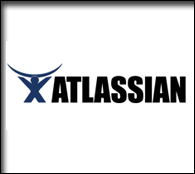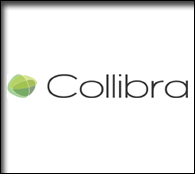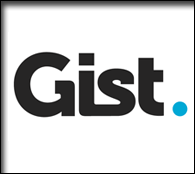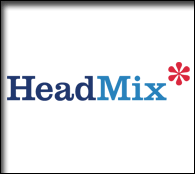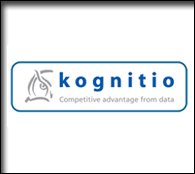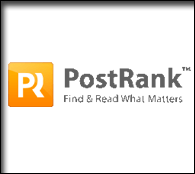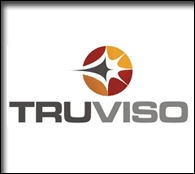Archive for June, 2010
Defrag: Recaps, Tidbits and APIs
by Eric Norlin on Jun.29, 2010, under Uncategorized
I mentioned the growing importance of APIs in the “defrag topic-verse” here, and Alcatel-Lucent is going to be making waves at the upcoming conference. But, not being the kind of folks that wait around, they went and acquired ProgrammableWeb in the meantime. Both companies (Alcatel-Lucent and ProgrammableWeb) were participants at our recent Glue conference, and I like all parties involved - great acquisition. If you want to understand the rise of APIs, app marketplaces and dumb pipes, Defrag is the place to wrap your noggin around this puppy.
In the meantime, I wanted to provide a link recap of my recent “blog series.” You actually might not have realized it was a series, but in truth, the separate posts are meant to be taken as a conclusive whole; a foundational document for this year’s conference, if you will. The post (in order) are:
Lastly, I’m opening up two unique sponsorship opportunities (that aren’t currently listed in the sponsor doc):
1. The ability to introduce one of our esteemed keynoters (and then have some “interaction time” with them and the Defrag attendees/participants afterwards).
2. The ability to be a Defrag video sponsor — think “TED-like videos” with a front-roll commercial (short) that we release post show.
They’re both unique and extremely limited (I’m only taking one video sponsor), so if you want in, drop me a line ASAP (enorlinATmac.com).
Defrag in the weeds
by Eric Norlin on Jun.28, 2010, under Uncategorized
My last post addressed the “meta” aspect of this year’s Defrag. But if all that you do is stay “in the meta,” you don’t get the full picture. The problem is that when a lot of people say “tactical” what they really mean is “case study.” And, while some case studies are wonderful, others really are just platitudes. The question becomes: how do you really get “in the weeds?”
There’s a wonderful creative tension that can be fostered by moving back and forth between extremely strategic and extremely tactical — and that’s what we’re aiming for with this year’s Defrag. Where the keynotes will explore the BIG topics, the breakout sessions are where I’m driving for insanely tactical. Think: “how to socialize your sales process in 3 steps”; “the 5 things to avoid when implementing a social media analytics platform”; “why homegrown tomatoes rock compared to store bought ones” — you get the idea. ![]()
What we want is to expand the parameters of our collective thinking and then drive it home via things that can be done right now.
It sounds great, and it’s something a lot of conferences aim for — the proverbial “target often missed.” I’ll be working hard to see just how close we can get.
I should also note that because of the CloudCamp success we had at Glue, we’ll be having a Barcamp at Defrag as well. The indefatigable Ben Kepes will be organzing “Technology4Good” - an event focused on “using technology to bring about change for the good.”
Through this series of posts, I hope you’ve begun to get the sense that Defrag is just not your ordinary technology conference. And I hope you’ll choose to join us.
Defrag and the Meta
by Eric Norlin on Jun.25, 2010, under Uncategorized
Let me start today’s post with a quick recap:
The uniting thread that runs through Defrag is data. Specifically, how data’s exponential growth and increasing velocity is dealt with by individuals, groups and organizations, and the tools and technologies that “handle” that data.
The “data problem” can be viewed through various angles. From the individual standpoint, data is a torrent to be filtered, harnessed, searched, connected, interacted with or perhaps just adapted to. From the organizational standpoint, data represents a state change that is altering everything from sales to marketing to collaboration to business intelligence to partner networks to operations. From either perspective, data should be approached as a strategic topic.
Last year’s Defrag pointed the way toward radical value propositions as the focus for this year’s Defrag. My four big takeaways from last year — the symbiotic nature of social media and enterprise 2.0, the importance of activity streams, the rise of the app marketplace, and the need for better BI/analytics — all point toward a Defrag 2010 that should focus on “radical value propositions.”
The “radical value proposition” isn’t about price, so much as the re-prioritization and distribution of the IT department. SaaS/Cloud based offerings have targeted lines of business over the traditional IT department. The result is a changing world wherein “IT” is re-prioritizing itself toward initiatives that have an implicitly low “cost load” (installation, maintenance, removal). Longer term, this means that “we’re all IT” — as the radical value proposition will make the purchasing, maintenance, and removal of IT solutions something that anyone inside of the organization can accomplish.
Do not underestimate the importance or difficulty of this transition. Because of this, it’s important that Defrag offer some “creative tension” in order to keep pushing ideas, innovation and the boundary forward.
This year we’ll begin fostering that creative tension via the structure and topics of our keynote speakers.
With data as the uniting thread, I’m asking the keynoters to speak to a “meta-topic” or angle regarding data. Accordingly, we’ll get 20 minute bursts from the brightest minds we can find. The end result (if we’re successful) will be a kaleidoscopic look at “data” from 30,000 feet. Current confirmed keynoters include:
Esther Dyson on Exploration (and data)
Michael Wesch on Anthropology
Paul Kedrosky on Markets
David Weinberger on Knowing
Jeff Jonas on Context
Stowe Boyd on Community
Alex Wright on Transition
Vivek Wadha on Innovation
Needless to say, it should be pretty incredible.
In the next post, I’ll talk about how the “meta” of the keynotes will contrast with the rest of the format, and why that creative tension will be unique and worthwhile.
Defrag and the Bazaar
by Eric Norlin on Jun.24, 2010, under Uncategorized
Yesterday’s post left us at the doorstep of “radical value propositions.” So, let’s dig in.
For the individual a “radical value proposition” isn’t really an overt thing. Individual’s adopt, like, push, cajole and laugh. They rarely perform cost/benefit analysis on a given solution. That doesn’t mean there aren’t “radical value propositions” that become inflection points in how individuals deal with data. Email, Facebook, Twitter — all could be pointed to as pretty radical value propositions.
For the organization, a “value proposition” takes on a bit more meaning. And a “radical” one means that the value derived is so over-the-top that implementation is nearly a no-brainer. In that context, let me quote at length from this article:
A few months ago the CIO was asked by the chief marketing officer to provide a way for marketing employees around the world to share and build documents together, and perform other collaborative tasks.
The CIO discussed the project with his application development group, then went back to the CMO and said “we can do this, in nine months at a cost of $14 million,” according to Whitehurst.
“The CMO says ‘what are you talking about? I was describing my daughter’s high school science project.’ And they were on Google Documents, sharing information, jointly editing documents, and they’re doing it for free. This is a true story. I may have been slightly off on the numbers, but a true story.”
That’s an amazing tale - and precisely why Defrag is focusing on “radical value propositions” this year. We have reached the point where the advance in “consumer-facing internet applications” is so fast that the enterprise IT department cannot possibly catch up. Enterprise *users* see a world where online collaboration is easy and cheap. What they experience inside of the enterprise is a traditional 9 to 36 month rollout that costs millions of dollars. That center will not hold.
The short-to-medium term will see a fracturing of possible solutions around this problem. Some enterprises will go the suite route. Some will go with Sharepoint and augment with point solutions. Some will simply go best of breed to attack specific vectors. Some may even “let the animals out of the cages” and just let employees use whatever the hell they want. There will be no “right” solution.
The “radical value proposition” will either present a sweeping solution (suite) at a reasonable investment price (think Sharepoint pricing), or it will follow the startup path — a cheap to free solution (or even freemium). The key is that the “radical” part of “value proposition” won’t be about *price*. It will be about the cost of installation, maintenance, and (most importantly) removal of the solution. The lower the cost load on the IT department to get the solution up and running, maintain it while running and remove it if it’s a failure, the more that solution is likely to get tried.
Just think “Google docs”: in the cloud, low investment, auto-maintenance, shut it off at a moment’s notice.
What we’re really witnessing here is the re-prioritization of the IT department. The command and control traditions of IT are breaking down amidst waves of SaaS/Cloud based offerings that target lines of business (versus horizontal organizational functions). And in that environment, IT is adapting by A) moving (or thinking of moving) non-mission critical apps to the cloud; B) racing to figure out security, compliance and identity management in the cloud; C) pushing new initiatives toward a future where pilots happen with minimal IT involvement (outside of account provisioning).
The larger picture is an even bigger disruption: the “IT department” (as a discrete unit) is being distributed (ie, it won’t be a discrete unit in the future). Even worse/better: it will be combined into other functions. Marketers become “application developers.” Salespeople become experts at the analytics/BI of social media. Operations personnel (finance, admin, etc) become the “go to guys” for “a specific app that’ll solve X.” “Information Technology” is no longer the protected realm of the priestly class, but the true bazaar that Eric Raymond’s open source manifesto foresaw years ago.
Information is everywhere. Individuals deal with information in complex, adaptive, near real-time ways (in groups and otherwise). Organizations will adapt because they won’t have a choice.
You’ll notice I’m not espousing some revamped 1960’s philosophy of the “flat organization.” Ugh. Of course there will be organizational structures. They may be more malleable, but they won’t be absent.
In the end, the radical value proposition makes the purchasing, implementation, maintenance, and removal of IT solutions something that almost anyone will be able to accomplish, as they need it. We all become “the IT department.”
In the meantime, the radical value proposition pushes toward that boundary. In the next post, I’ll begin to address how we’ll talk about this at Defrag, and the “creative tension” we’re looking to foster.
Defrag Back and Forward
by Eric Norlin on Jun.23, 2010, under Uncategorized
Now that I’ve looked at some of the underpinnings of Defrag, I wanted to capture (briefly) my personal big takeaways from last year’s conference.
1. Two sides of the same coin: The overwhelming meta-theme from Defrag 2009 was that social media and enterprise 2.0 are two sides of the same coin (call it “social business”). Beyond that, it was pretty obvious that very few vendors were even on the path to addressing this (much less had a solution). The ball seems to have moved a bit since last year, though admittedly, there are some huge hurdles here -as the conflation of “marketing” and IT is really what this is all about. And, *that*, is one seriously hard move. Going forward, this meta-theme means that the “consumerization of IT” extends so far as to mean that IT functions dissolve into other horizontal and line of business units.
2. Activity Streams: There was a clear consensus last year that activity streams (inside of the enterprise) were going to be big. Socialcast was an early leader in the space, but around last year’s show the signs of clear competition from the likes of Socialtext, Yammer and Salesforce.com had appeared. Of course, now SFdC’s Chatter product has come out of beta, so the Defrag participant’s interest in activity streams seems more than spot-on.
3. The Rise of the App Marketplace: This was one of the forward-looking things that really hit me, but may have slipped under the radar a bit. The meme of the app marketplace is coming to the enterprise. Installing collaborative, emergent environments is not enough. What we’re really driving toward is an opening up of the enterprise data layer — exposing APIs, if you will — and driving toward a world where the employee (or partner or customer) is not only consuming IT applications, but BUILDING them. The IT “app marketplace” is coming. Bank on it.
4. Business Intelligence/Analytics: Whether we were talking social media, semantic structures, or enterprise 2.0 - the rumble of “yea, but where’s the BI/analytics side” was ever-present from buyers. I heard it over and over and over again — *especially* on the social media side. And it’s not a failure of vendors. They’re trying. The problem is that we just don’t have good constructs for *how* to measure what we need measured fully. If there’s one “neglected” area that I see (and I mean at other conferences, in the blogs, etc), its BI/analytics.
Throw those four things in a pot and I think you’ve got a fair assessment of where we ended Defrag 2009 (you’ll notice that much of it is still ahead of where we are in 2010). But what about going forward?
Well, cyclicality rules. And, as the enterprise 2.0 space begins to approach mainstream adoption (I said, “begins”) - we’re now seeing the all too familiar “suite versus best of breed” wars heat up again. So, let me just state this now: this argument will not get resolved. In fact, it only serves as a sign post on the road of maturity. It’s usefulness lies in knowing that you can watch the best of breed innovation to see where the suite acquisitions will come from. That’s it. Really. Next?
In the wake of that signpost, and in light of the as yet resolved areas highlighted above, what we really need to explore are *radical* value propositions. Sameer Patel and I started this conversation a few months back (with regards to Defrag), and in the next post, I’ll start laying out what I mean, and how Defrag 2010 will try to address it.
Defrag and Data
by Eric Norlin on Jun.22, 2010, under Uncategorized
In my last post, I wrote:
Bottom-line: There’s an exponential increase in the amount and velocity of data that we’re dealing with — as individuals, groups and organizations. And most of the technologies we’re implementing are actually increasing that amount and velocity of data. Defrag is about that. It’s about how we derive useable information from it (intelligence/analytics), how we collaborate around it (enterprise 2.0), how we structure the unstructured components (semantic web), how we relate to the data being created “outside” of us (social media), and a whole bunch of other “how’s.”
I wanted to expand on that a bit.
“Data” sounds technical. “Data” sounds passive. “Data” sounds isolated. And that’s certainly not what I mean when I’m talking about Defrag. But, for lack of a better word, “data” it is.
There’s no denying that the sheer volume and velocity of data has grown, and is growing, exponentially. You can look at data from varying, useful angles.
From the individual out (to groups, organizations, sub-cultures, societies, globally), data is seen as an ever increasing, and not ever more useful, torrent. Plenty of people have spoken about “information overload.” But the more useful lens appears to be one that Stowe Boyd advocates: that there’s a state change happening; that “information overload” casts the situation as a problem, when in fact, it may just be a new situation. For an individual, data needs to be transformed into find-able information (the more implicitly, the better). But most importantly, data is actually a means of interaction. The advent of social media, the “consumerization of IT” and the “socializing” of everything from CRM to partner networks to sales, is fundamentally a reaction to the changing nature and tools we use around data (in it’s filtered, unfiltered, searchable, interactive, asynchronous state). “Data” for the individual touches email, social networks, implicit algorithms, search, and all of the issues around structuring the meaning of data.
From the organization in (toward the individual), “data” is a state change to be used. Collaboration, business intelligence, analytics, search, marketing (conversationally), sales processes, semantic structures — ALL of these areas are built on the changing state of the data we deal with. When businesses approach data, their immediate urge is to find efficiency. And efficiency of business process is what is driving the great majority of tools being deployed in spaces like “enterprise 2.0.”
In light of these two simplistic angles, “data” (and defrag) is not an inherently technical topic. Rather, it’s a strategic topic that seeks to use technologies and tools to alter the interaction that individuals, groups, and organizations have with data (and each other). None of that excludes the intelligence that is to be derived from these interactions — if anything it may make BI and analytics the most important piece of this puzzle.
So, what does all of this mean for Defrag (the conference)? I’ll deal with that at length in the next post, but briefly:
Defrag has always been (and always will be - as long as I’m involved) a conversational and strategic conference. Defrag isn’t aimed at the mainstream adopter. And Defrag will never be larger than 500 people in attendance (on purpose).
Accordingly, Defrag tends to talk about what will be the topic of interest in the next 12-18 months. As an example, last year’s Defrag zeroed in on the two sides of the same coin that are social media and the “enterprise 2.0″ space. That zeroing in was a consequence of where the participants (ie, “attendees” - but they don’t just attend) took the agenda. My big take away from last year’s Defrag was that business intelligence and analytics were the next great frontier.
Coming up….what I think last year’s Defrag says about where this year’s Defrag will head.
Defrag: A Beginning
by Eric Norlin on Jun.20, 2010, under Uncategorized
To “defrag” (or defragment) is to move disparate bits closer together, so as to create a more contiguous grouping of data. In computer terms, it leads to more efficiency and a cleaner file system. At its core, it’s all about data (okay, technically, 1’s and 0’s - but call it data).
The first time I ever thought of naming a conference “Defrag,” I was at the inaugural SaaScon (an event I created back in…uhhh…2006, 2007?). It was an “aha moment” - me sitting in a keynote, daydreaming about a new conference, and (bam!), I should call it “Defrag.” “Yea, that just sounds cool.”
A few weeks (or maybe it was months, but for our story’s purpose - weeks) later, I’m reading a Brad Feld blog post about “intelligence amplification” (as Brad admitted, a bad name). Essentially, the idea that we have so much “data” that we need tools to help us turn it into “information” - and the more use-able the better (and the more implicit the operation, the better).
The formation of Defrag (the conference) ensued.
From inception, Defrag was never tied (at least not in my mind) to some “sub-industry niche” like “enterprise 2.0″ or “the semantic web” or “business intelligence” or “social media.” Which isn’t to say that we haven’t embraced all of those niches. We certainly have (enthusiastically). But I think we’ve tried to maintain the position that Defrag is about data (in its largest sense).
Bottom-line: There’s an exponential increase in the amount and velocity of data that we’re dealing with — as individuals, groups and organizations. And most of the technologies we’re implementing are actually increasing that amount and velocity of data. Defrag is about that. It’s about how we derive useable information from it (intelligence/analytics), how we collaborate around it (enterprise 2.0), how we structure the unstructured components (semantic web), how we relate to the data being created “outside” of us (social media), and a whole bunch of other “how’s.”
I’d like to think that this focus (a meta-meta focus) has helped shaped the kind of conference Defrag is — conversational, “strategic,” forward-looking.
In the next two or three posts, I’ll look to elaborate on what that means topically and format-wise for Defrag 2010.
